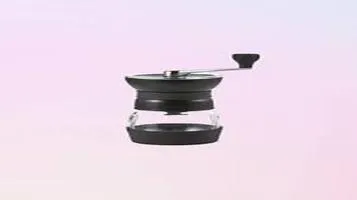Microfiber Cloths: The Unsung Heroes of Cleaning and Maintenance
Microfiber cloths are innovative cleaning materials renowned for their exceptional ability to capture dust, dirt, and bacteria. Composed of synthetic fibers, typically polyester and polyamide, these cloths have fibers that are finer than a human hair, enhancing their surface area and absorbency. This unique structure allows microfiber cloths to clean effectively with minimal or no cleaning agents, making them environmentally friendly. They are versatile and can be used for various cleaning tasks, from wiping down surfaces and cleaning windows to polishing electronics without leaving streaks or scratches. Additionally, microfiber cloths are durable and can be washed and reused multiple times, which makes them a cost-effective choice for both household and professional cleaning needs.

Microfiber cloths have become a staple in households, offices, and industries worldwide, lauded for their efficiency, versatility, and eco-friendliness. These seemingly simple pieces of fabric are revolutionizing the way we approach cleaning and maintenance, offering a range of benefits that traditional cleaning materials simply can't match. This review delves into the various aspects of microfiber cloths, examining their construction, uses, advantages, and potential drawbacks.
Construction and Technology
Microfiber cloths are made from synthetic fibers, typically a blend of polyester and polyamide (nylon). The fibers are incredibly fine—about 1/100th the diameter of a human hair—which allows them to achieve superior cleaning capabilities. The secret lies in their unique structure: each fiber is split into multiple finer fibers, creating a vast surface area with millions of tiny hooks that can trap dirt, dust, and moisture.
The high density of fibers per square inch means that microfiber cloths can hold up to seven times their weight in water. This impressive absorbency makes them ideal for a myriad of cleaning tasks, from wiping down surfaces to mopping up spills.
Versatility and Usage
One of the most compelling features of microfiber cloths is their versatility. They can be used for an extensive range of cleaning tasks across various environments:
1. Household Cleaning: Microfiber cloths excel at cleaning kitchen counters, stovetops, and sinks. They can effortlessly pick up grease and grime without the need for harsh chemicals. In bathrooms, they can be used to wipe down tiles, mirrors, and fixtures, leaving them spotless and streak-free.
2. Automotive Care: Car enthusiasts often swear by microfiber cloths for detailing their vehicles. The cloths are gentle enough to use on delicate surfaces like paint, glass, and chrome, yet effective at removing dirt and smudges.
3. Electronics: Microfiber cloths are perfect for cleaning screens on phones, tablets, laptops, and TVs. Their soft texture ensures that screens are cleaned without scratches or damage.
4. Dusting: Traditional dusters can often spread dust rather than collect it. Microfiber cloths, however, trap dust particles within their fibers, making dusting more efficient and less likely to trigger allergies.
5. Spill Management: Thanks to their high absorbency, microfiber cloths are excellent for quickly mopping up spills, whether it’s a knocked-over glass of water or a more stubborn spill like oil.
Eco-Friendliness
In an era where sustainable living is becoming increasingly important, microfiber cloths stand out as an eco-friendly option. Their ability to clean effectively without the need for chemical cleaners reduces the number of harmful substances released into the environment. Additionally, they are reusable and durable, lasting for hundreds of washes if cared for properly. This longevity reduces the need for disposable cleaning products, thereby minimizing waste.
Care and Maintenance
To get the most out of your microfiber cloths, it’s essential to follow proper care guidelines. They should be washed in warm water with a mild detergent, avoiding fabric softeners and bleach, which can damage the fibers. Air drying is recommended, although low-heat tumble drying is also acceptable. Proper care ensures that the cloths maintain their effectiveness and durability over time.
Potential Drawbacks
While microfiber cloths offer numerous benefits, there are some potential drawbacks to consider. One concern is their impact on the environment during the manufacturing process. The production of synthetic fibers involves the use of non-renewable resources and can result in pollution. Moreover, washing microfiber cloths releases microplastics into the water supply, which can contribute to environmental pollution.
Another issue is cost. High-quality microfiber cloths can be more expensive upfront compared to traditional cleaning cloths. However, given their durability and effectiveness, they often prove to be more cost-effective in the long run.
Conclusion
Microfiber cloths have undeniably changed the landscape of cleaning and maintenance. Their superior cleaning capabilities, versatility, and eco-friendly attributes make them a valuable addition to any cleaning arsenal. While there are some environmental concerns associated with their production and disposal, the benefits they offer—reduced chemical use, reusability, and long-term cost savings—often outweigh these drawbacks.
For those seeking an efficient, versatile, and sustainable cleaning solution, microfiber cloths are an excellent choice. They may be small in size, but their impact on cleanliness and environmental sustainability is anything but. Whether you're a homeowner, a car enthusiast, or an office manager, incorporating microfiber cloths into your cleaning routine is a decision that’s likely to yield significant benefits.






